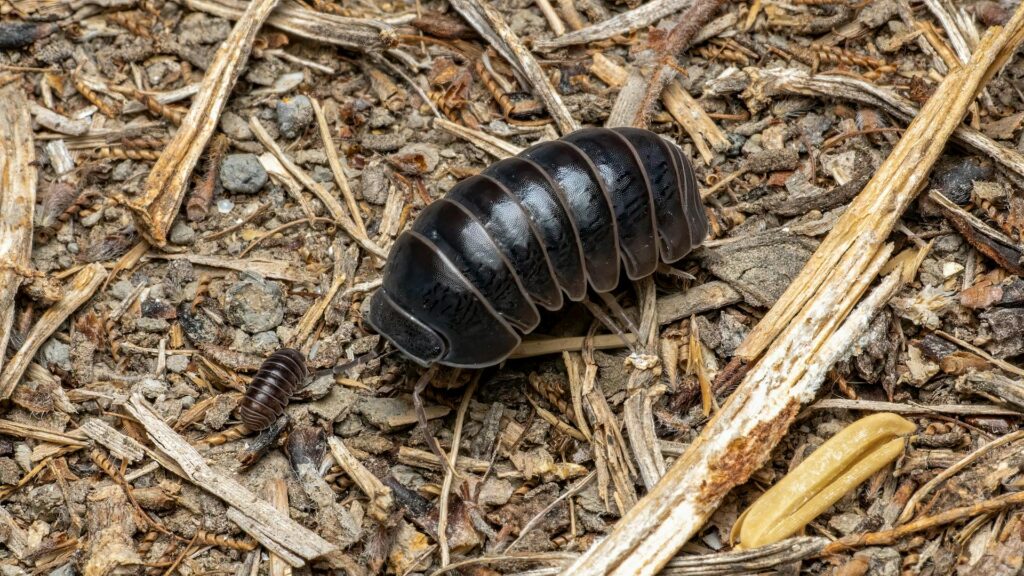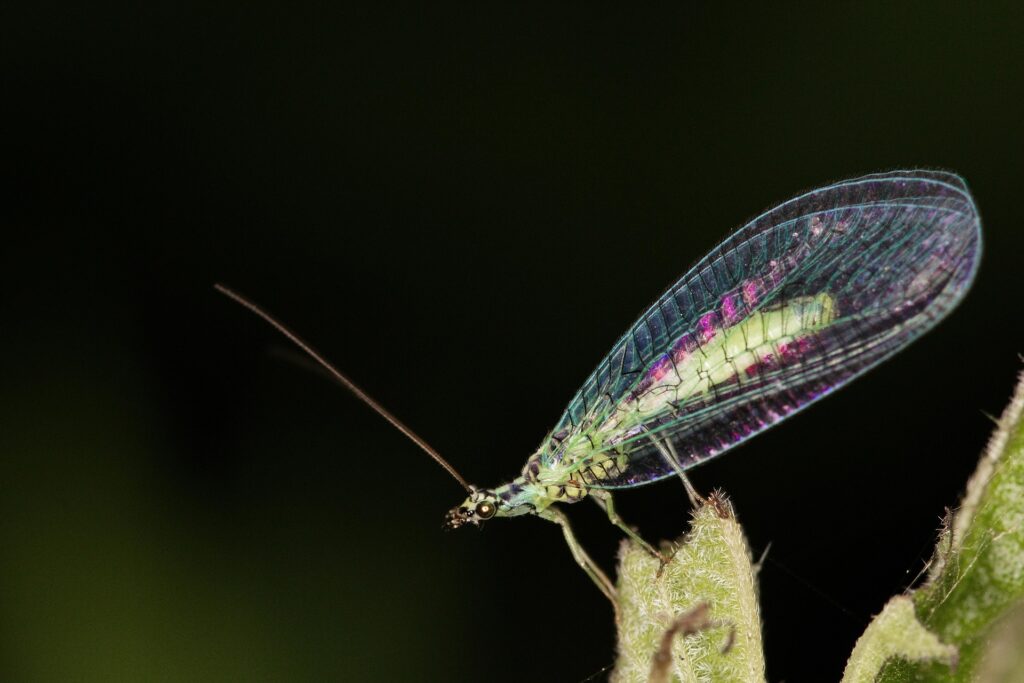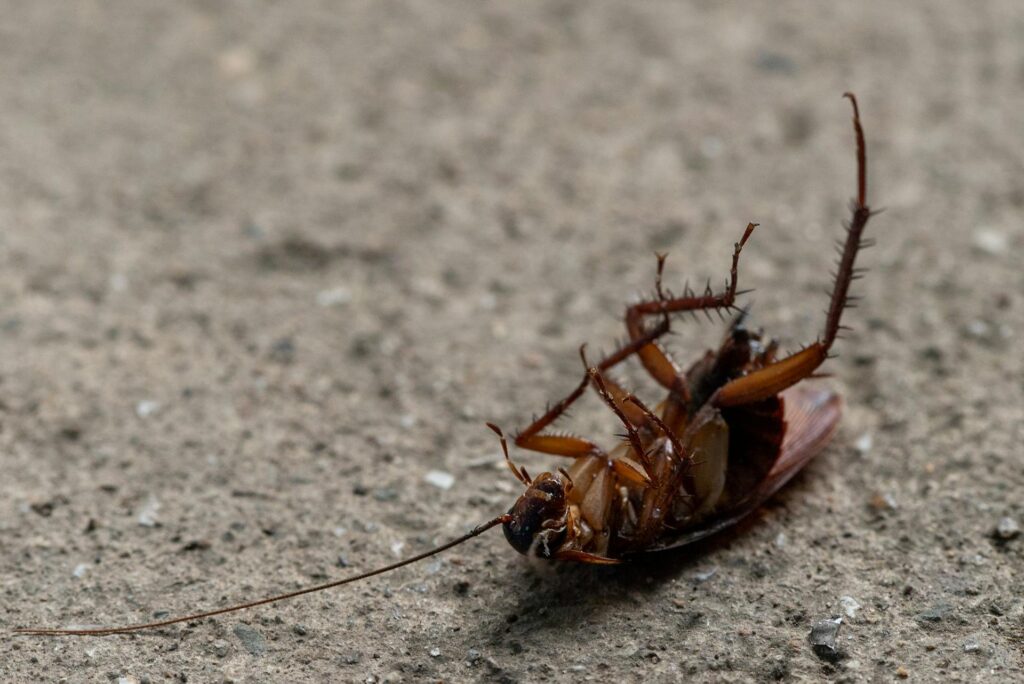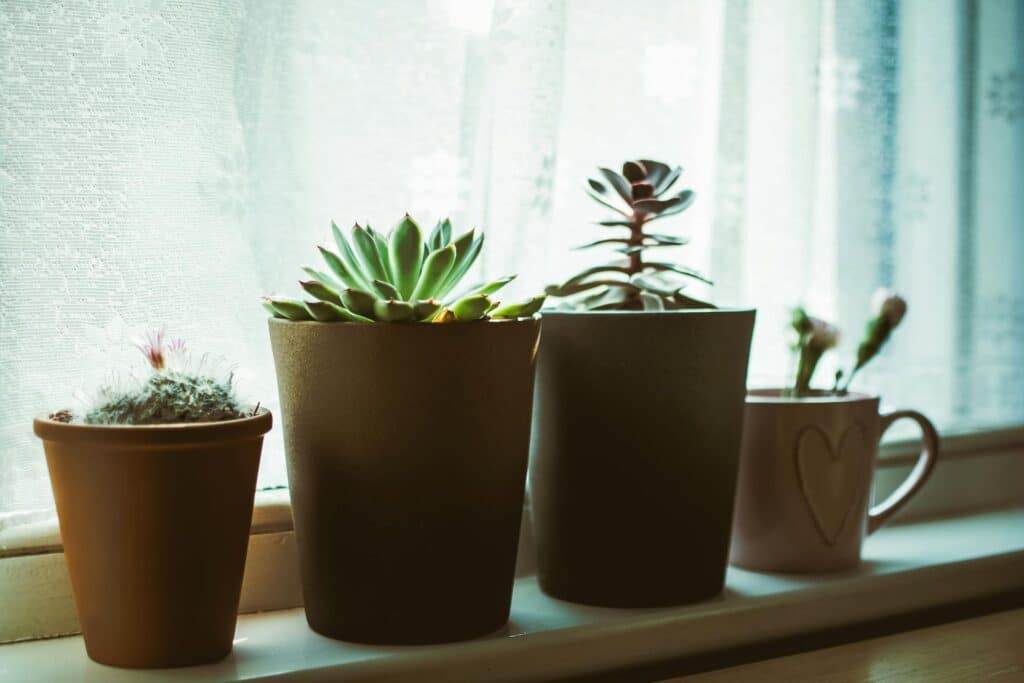When it comes to venomous spiders in North America, black widows and brown recluses represent the two most medically significant species that homeowners might encounter. Both spiders can deliver dangerous bites that require immediate medical attention, but they differ significantly in appearance, behavior, habitat preferences, and the types of symptoms their bites produce. Understanding these differences is crucial for proper identification, implementing appropriate prevention measures, and knowing how to respond if you encounter either species around your home and if you need spider control.
What are black widows?
Black widow spiders belong to the genus Latrodectus and are found throughout North America, with several species including the southern black widow, northern black widow, and western black widow. These spiders are notorious for their potent neurotoxic venom, which affects the nervous system and can cause severe symptoms in humans. Black widows are relatively sedentary spiders that prefer to remain in their webs, only biting when directly threatened or accidentally contacted.
Female black widows are significantly larger and more dangerous than males, as males rarely bite and have much smaller venom glands. These spiders prefer dark, undisturbed locations where they can build their characteristic irregular, tangled webs. They’re primarily nocturnal and feed on various insects that become trapped in their sticky webs.
Black widows can be found in both indoor and outdoor environments, often in areas like garages, sheds, basements, woodpiles, and outdoor furniture. Despite their fearsome reputation, black widow bites are relatively rare, as these spiders typically try to escape rather than attack when disturbed.
What are brown recluses?
Brown recluse spiders (Loxosceles reclusa) are native to the south-central United States, primarily found in a range extending from Texas to Georgia and north to southern Iowa. These spiders are known for their cytotoxic venom, which destroys tissue and can cause necrotic lesions at bite sites. Unlike black widows, brown recluses are wandering spiders that don’t build webs to catch prey—instead, they actively hunt for small insects and other arthropods during nighttime hours.
Brown recluses prefer indoor environments and are commonly found in homes, particularly in undisturbed areas like closets, attics, basements, and storage rooms. They’re excellent climbers and can be found at any level of a structure, from basements to upper floors. These spiders are extremely reclusive, as their name suggests, and prefer to hide in dark, quiet places during daylight hours.
They’re often found in cardboard boxes, behind furniture, in clothing that hasn’t been worn recently, or in bedding that’s been stored. Brown recluse bites typically occur when the spider is trapped against human skin, such as when putting on clothing or shoes where the spider is hiding.
What do black widows look like?
Black widow spiders are relatively easy to identify due to their distinctive appearance. Adult females are the most recognizable, measuring about ½ inch in body length with a leg span of up to 1½ inches. They have glossy, jet-black bodies with the characteristic red hourglass marking on the underside of their round, bulbous abdomen. Some species may have red spots or stripes on the top of the abdomen as well. Their legs are relatively long and thin compared to their robust body.
Male black widows are much smaller, measuring only about ¼ inch in body length, and are typically brown or gray with lighter markings. They pose virtually no threat to humans due to their size and reduced venom potency. Juvenile black widows can vary in coloration, often appearing more brownish with white or yellow markings that gradually darken as they mature.
The most distinctive feature for identification is the red hourglass marking on the female’s underside, though this marking can sometimes appear orange or yellow depending on the species. Black widows have a characteristic body shape with a large, spherical abdomen and relatively small cephalothorax (head and thorax region), giving them their distinctive silhouette.
What do brown recluses look like?
Brown recluse spiders have a more subtle appearance that makes them harder to identify than black widows. Adult brown recluses measure about ¼ to ½ inch in body length with a leg span of approximately 1 inch. Their most distinctive feature is the dark, violin-shaped marking on their cephalothorax, which points toward the abdomen—earning them the nickname “fiddleback” or “violin” spider. However, this marking can be faint and difficult to see, particularly in juveniles.
Brown recluses have uniformly colored legs without bands or stripes, and their overall coloration ranges from light tan to dark brown. Their body appears more elongated and less robust than black widows, with a smaller, less pronounced abdomen. One of the most reliable identifying features is their eye arrangement—brown recluses have six eyes arranged in three pairs, unlike most spiders which have eight eyes.
Their body appears relatively flat when viewed from above, and they lack the dramatic size difference between abdomen and cephalothorax seen in black widows. The violin marking, while diagnostic, can vary in prominence and may be absent in some individuals, making definitive identification challenging without close examination. Their uniform brown coloration helps them blend effectively with their preferred hiding spots in homes and storage areas.
What are some main differences between black widows and brown recluses?
Black widows and brown recluses differ significantly in appearance, behavior, and habitat preferences. Physically, black widows are larger with distinctive glossy black coloration and red hourglass markings, while brown recluses are smaller, uniformly brown, and feature the characteristic violin-shaped marking on their back. Behaviorally, black widows are web-builders that remain relatively stationary, while brown recluses are active hunters that roam freely and don’t build prey-capturing webs.
Geographically, black widows are found throughout North America, while brown recluses have a more limited range concentrated in the south-central United States. Habitat-wise, black widows prefer outdoor locations like woodpiles and sheds but may venture indoors, whereas brown recluses are predominantly indoor spiders that actively seek human dwellings.
Bite symptoms also differ dramatically—black widow bites cause neurological symptoms like muscle cramps and systemic effects, while brown recluse bites typically cause localized tissue death and necrotic lesions. Web construction provides another clear distinction: black widows build characteristic tangled, irregular webs, while brown recluses create minimal webbing only for shelter, not prey capture.
What are more dangerous: black widows or brown recluses?
Both spiders pose serious health risks, but they present different types of danger. Black widow bites are more immediately life-threatening, as their neurotoxic venom can cause severe systemic symptoms including muscle paralysis, difficulty breathing, and cardiovascular complications that may require emergency intervention. However, death from black widow bites is extremely rare with modern medical treatment.
Brown recluse bites are dangerous in a different way, causing progressive tissue destruction that can result in large, slow-healing necrotic ulcers requiring months of treatment and sometimes surgical intervention. While rarely fatal, brown recluse bites can cause permanent scarring and disability, particularly if the bite occurs on extremities or areas with limited blood supply.
Statistically, both spider bites are rare, and fatalities are extremely uncommon. Black widow antivenom is available and effective when administered promptly, while brown recluse bites lack specific antivenom but can be managed with supportive care and wound management. The “danger” often depends on individual factors like age, health status, and speed of medical intervention. Young children, elderly individuals, and those with compromised immune systems face higher risks from either species.
Lifecycle of a black widow
Black widow spiders undergo complete metamorphosis with egg, larval (spiderling), and adult stages. The lifecycle begins when males locate females through pheromones and web vibrations, often resulting in the male being consumed by the female after mating—the source of the “black widow” name. Females produce distinctive white, spherical egg sacs measuring about ½ inch in diameter, each containing 200-900 eggs. These egg sacs are carefully guarded by the female and suspended within her web.
Eggs hatch after 14-30 days, and the tiny spiderlings initially remain clustered together for protection. After their first molt, they disperse by ballooning—releasing silk strands that catch air currents to carry them to new locations. Spiderlings undergo 5-6 molts over 2-4 months before reaching maturity, with females growing significantly larger than males during this process.
Adult females can live 1-3 years and may produce multiple egg sacs during their lifetime, particularly in warmer climates where breeding can occur year-round. Males typically live only a few months and die shortly after mating. Environmental factors like temperature and food availability significantly influence development time and reproductive success.
Lifecycle of a brown recluse
Brown recluse spiders have a slower development cycle compared to many spider species, taking 1-2 years to reach maturity. Their lifecycle begins with mating, typically occurring from May through October. Unlike black widows, male brown recluses are not usually consumed after mating and may mate with multiple females. Females produce small, white egg sacs containing 40-50 eggs, which are deposited in secluded locations and covered with silk.
Eggs hatch after 24-36 days, producing tiny spiderlings that resemble miniature adults. Brown recluse spiderlings develop slowly, undergoing 5-8 molts over 8-12 months before reaching sexual maturity. They can survive long periods without food—up to 6 months in some cases—which contributes to their success in indoor environments where prey may be scarce.
Adult brown recluses are remarkably long-lived for spiders, with some individuals surviving 2-4 years under favorable conditions. They can produce multiple egg sacs per year, and their ability to survive in low-food environments means populations can persist in homes for extended periods. Their slow development and longevity contribute to the gradual but steady growth of infestations in suitable habitats.
How to know if you have a black widow infestation
Identifying a black widow presence involves recognizing both the spiders themselves and their distinctive webs and egg sacs:
- Web characteristics: Look for irregular, tangled webs with no apparent pattern, typically found in dark, undisturbed areas like corners of garages, sheds, basements, or under outdoor furniture.
- Egg sacs: Discover spherical, white or light-colored egg sacs about ½ inch in diameter suspended within webs or attached to surfaces near web sites.
- Spider sightings: Spot the distinctive black spiders with red hourglass markings, particularly females which are larger and more visible than males.
- Preferred locations: Check woodpiles, storage areas, outdoor toilets, meter boxes, and areas around foundations where debris accumulates.
- Bite incidents: Experience unexplained bites with neurological symptoms like muscle cramps, particularly if they occur in areas where black widows might be present.
- Web debris: Notice prey remains like insect carcasses wrapped in silk within webs, indicating active feeding.
- Seasonal patterns: Observe increased activity during warmer months when black widows are most active and visible.
- Outdoor indicators: Find webs in garden areas, under patio furniture, in tool sheds, or around swimming pool equipment where these spiders commonly establish themselves.
How to know if you have a brown recluse infestation
Brown recluse infestations can be subtle and difficult to detect due to their reclusive nature and preference for hidden locations:
- Spider sightings: Discover brown spiders with violin-shaped markings, particularly in closets, storage areas, or when moving stored items that haven’t been disturbed recently.
- Bite incidents: Experience unexplained skin lesions that develop into necrotic ulcers, especially if they occur after handling stored clothing, bedding, or boxes.
- Shed skins: Find discarded exoskeletons in areas where spiders hide, such as behind furniture, in storage boxes, or in rarely used rooms.
- Geographic location: Live within the known range of brown recluses (south-central United States), as many “brown recluse” reports outside this area involve misidentified spiders.
- Indoor focus: Notice spider activity primarily indoors rather than in outdoor areas, as brown recluses strongly prefer indoor environments.
- Minimal webbing: Observe small amounts of irregular webbing in corners or hiding spots, used for shelter rather than prey capture.
- Nighttime activity: Spot spiders moving at night when using flashlights in dark areas of the home.
- Storage area signs: Find evidence in cardboard boxes, clothing piles, or undisturbed storage areas where these spiders commonly hide.
- Clustering behavior: Discover multiple spiders in favorable locations, as brown recluses may aggregate in optimal habitats within structures.
Do you get rid of black widows and brown recluses the same way?
While black widows and brown recluses share some control methods, their different behaviors require distinct approaches for effective elimination. Both species respond to general spider control measures like sealing entry points, reducing clutter, and applying residual insecticides to hiding areas. However, black widow control must focus on web removal and treating outdoor harborage sites where they build webs, while brown recluse control emphasizes treating indoor hiding places and storage areas where they actively roam.
Black widows require attention to web-building sites like woodpiles, sheds, and outdoor structures, while brown recluses need intensive indoor treatment of closets, storage rooms, and areas where they hunt. Different pesticide formulations may be more effective for each species based on their activity patterns and preferred microhabitats.
For both species, but particularly for these venomous spiders, professional pest control services offer the most prudent and effective approach. Professional technicians can accurately identify the species present, understand their specific biology and behavior, and implement targeted treatments that eliminate populations while minimizing risks to household members. They also have access to professional-grade products and protective equipment necessary for effectively treating areas where dangerous spiders may be present.
How to prevent a black widow infestation
Preventing black widow spiders requires eliminating their preferred habitat conditions and reducing opportunities for web construction:
- Remove harborage sites: Clear woodpiles, debris, and clutter from around your home’s perimeter, and store firewood elevated and away from structures.
- Reduce outdoor lighting: Minimize exterior lighting that attracts insects, which serve as prey for black widows and draw them closer to your home.
- Seal entry points: Caulk cracks and gaps around foundations, windows, doors, and utility penetrations to prevent spiders from entering structures.
- Maintain vegetation: Trim shrubs and vegetation away from your home’s exterior walls and eliminate dense ground cover where spiders might hide.
- Clean regularly: Remove webs promptly when discovered, and maintain clean storage areas in garages, sheds, and basements.
- Protect outdoor areas: Inspect and clean outdoor furniture, grills, and recreational equipment before use, especially items stored in garages or sheds.
- Use protective gear: Wear gloves when working in areas where black widows might be present, such as gardening, moving firewood, or cleaning storage areas.
- Control prey insects: Implement general pest control measures to reduce insect populations that attract and sustain spider populations.
- Regular inspection: Check potential hiding spots monthly, particularly during warmer months when black widow activity increases.
How to prevent a brown recluse infestation
Preventing brown recluse spiders focuses primarily on indoor environment management and reducing their access to suitable hiding places:
- Reduce clutter: Minimize storage of cardboard boxes, clothing piles, and unnecessary items in closets, basements, and storage areas where brown recluses hide.
- Seal indoor entry points: Caulk cracks around baseboards, door frames, and areas where utilities enter the home to prevent spider movement between rooms.
- Use plastic storage containers: Replace cardboard boxes with sealed plastic containers for long-term storage, as spiders cannot easily access these containers.
- Regular cleaning: Vacuum frequently in storage areas, closets, and behind furniture where brown recluses might establish hiding spots.
- Shake out stored items: Before using clothing, bedding, or items that have been stored, shake them out thoroughly to dislodge any hidden spiders.
- Install door sweeps: Use tight-fitting door sweeps and weatherstripping to prevent spiders from moving between rooms or entering from outside.
- Control humidity: Maintain low humidity levels in basements and storage areas using dehumidifiers, as brown recluses prefer moderately humid conditions.
- Professional monitoring: Consider professional inspections if you live within brown recluse range, particularly if moving into previously unoccupied structures.
- Protective measures: Wear gloves when handling stored items and check shoes and clothing before putting them on, especially in areas where brown recluses are established.
When to call the professionals
When dealing with black widow or brown recluse problems in or around your home, professional pest control services are strongly recommended due to the serious health risks these venomous spiders pose. Our pest control technicians will perform a detailed inspection to assess the situation and develop a customized treatment plan based on the specific spider species present. We’ll identify whether you’re dealing with black widows that build webs in outdoor areas and storage spaces, or brown recluses that hide in indoor locations and actively hunt throughout structures.
Given the potentially serious medical consequences of bites from either species, attempting DIY control is not recommended. If you’re experiencing problems with these venomous spiders, contact professional pest control services immediately for a free quote and treatment that protects your family from these dangerous arachnids.
Black widow and brown recluse FAQs
Here are some commonly-asked questions from homeowners about black widow and brown recluse spiders.
Q: What types of webs do black widows and brown recluses spin?
Black widows spin distinctive irregular, tangled webs with no apparent pattern, often described as “cobwebs.” These sticky webs are used to catch prey and can be found in corners, under objects, or between structures. Brown recluses, however, don’t build prey-catching webs at all. Instead, they create minimal, irregular webbing only for shelter in their hiding spots. This difference in web construction is a key identifying feature—if you see a messy, substantial web, it’s likely from a black widow, not a brown recluse.
Q: Which are more venomous: black widows or brown recluses?
Both spiders are highly venomous but in different ways. Black widows have neurotoxic venom that affects the nervous system, causing muscle cramps, paralysis, and potentially life-threatening systemic symptoms. Brown recluses have cytotoxic venom that destroys tissue, causing necrotic lesions that can take months to heal. Black widow bites are more immediately dangerous and can be fatal without treatment, while brown recluse bites rarely kill but can cause permanent tissue damage and scarring.
Q: What do black widow bites look like?
Black widow bites often appear as small, red puncture marks that may be barely visible initially. The bite site itself may develop a pale center surrounded by redness, resembling a bull’s-eye pattern. However, the most concerning symptoms are systemic rather than local—severe muscle cramps, abdominal pain, nausea, and difficulty breathing typically develop within hours. Unlike brown recluse bites, black widow bites don’t usually cause significant local tissue damage, but the neurological symptoms can be severe and require immediate medical attention.
Q: What do brown recluse bites look like?
Brown recluse bites initially appear as small, red, sometimes itchy spots that may resemble mosquito bites. Within 2-8 hours, the bite develops a characteristic bull’s-eye appearance with a white or pale center surrounded by redness. Over the following days, the center may become necrotic (dead tissue), turning dark and eventually forming an open ulcer. The lesion can expand to several inches in diameter and may take weeks or months to heal, often leaving permanent scarring. Systemic symptoms are less common than with black widow bites.
Q: Can I remove black widows and brown recluses myself?
Due to the serious health risks posed by both species, professional removal is strongly recommended rather than DIY attempts. These venomous spiders can deliver dangerous bites when disturbed, and proper identification requires expertise to distinguish them from harmless species. Professional pest control technicians have specialized equipment, protective gear, and knowledge of spider behavior necessary for removal. They can also implement comprehensive treatments that eliminate entire populations rather than just individual spiders, reducing the risk of future encounters.









